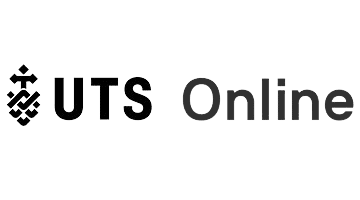Tableau is a popular data visualisation tool that allows users to connect, visualise, and share data in a simple and intuitive way. It is used by businesses, analysts, and data scientists to create interactive dashboards, charts, and reports that help them make data-driven decisions.
Data visualisation is an essential part of data analysis, and Tableau makes it easy to create powerful visualisations that can be customised to meet the specific needs of your data analysis. With Tableau, you can connect to various data sources, such as spreadsheets, databases, and cloud services, and quickly create visualisations using a drag-and-drop interface.
Tableau is a powerful data visualisation and business intelligence application that is utilised for the purpose of reporting on and analysing massive amounts of data. It is a firm based in the United States that was founded in 2003; in June of 2019, Salesforce purchased Tableau.
Users are given the ability to construct a variety of charts, graphs, maps, dashboards, and stories for the purpose of visualising and analysing data in order to assist in the process of making business choices.
Tableau was positioned as a leader in the Magic Quadrant conducted by Gartner for both business intelligence and analytics.
This Tableau lesson will cover a wide variety of how-to topics, including the creation of various charts and graphs, as well as the visualisation of data through reports and dashboards in Tableau, in order to draw useful insights.
Quick Links To Online Data Science Courses
James Cook University
Master Of Data Science Online
- 24 months / Part-time
- $3,700 per subject, FEE-HELP is available
- 12 subjects (One subject per each 7-week study period)
RMIT Online
Graduate Certificate In Data Science
- 8 months intensive, Part-time
- $3,840 per course, FEE-HELP available
- 4 Courses (7 weeks each)
University Of New South Wales Sydney
Graduate Certificate in Data Science
- Duration: As little as 8 months
- 4 courses
- Study Intakes: January, March, May, July, September and October
UTS Online
Applied Data Science for Innovation (Microcredential)
- 6 weeks
- Avg 14 hrs/wk
- $1,435.00
What Is Data Visualization?
The graphical depiction of information and data is what is known as "data visualisation." Data visualisation tools make it possible to quickly see and comprehend patterns, outliers, and trends in the data through the utilisation of graphical components such as charts, graphs, and maps.
In addition to this, it offers a good method for workers or business owners to display data in a way that does not confuse audiences who are not technically oriented.
In the realm of Big Data, data visualisation tools and technologies are indispensable for conducting in-depth analyses of copious quantities of data and arriving at conclusions supported by said data.
What Are the Advantages and Disadvantages of Data Visualization?
It can appear that there are no drawbacks to doing something as uncomplicated as displaying data in graphical representation. Yet, when displayed in the incorrect manner of data visualisation, data can sometimes be misrepresented or misconstrued. While deciding whether or not to build a data visualisation, it is essential to bear in mind both the benefits and drawbacks of the option.
Advantages
Colours and patterns are naturally appealing to the human eye. Humans are able to differentiate between red and blue quite rapidly, as well as squares and circles. Visual elements permeate every aspect of our society, from paintings and commercials to films and television shows.
Another sort of visual art that piques our attention and maintains our focus where it should be is data visualisation. When we look at a chart, the first things that stand out to us are the patterns and the outliers.
When something can be seen, it is much easier for us to take it in. It's like telling a story, but with a point. You probably already have some idea of how much more powerful a visualisation can be if you've ever tried to see a pattern in a large spreadsheet of data but were unsuccessful.
The following is a list of other benefits associated with data visualisation:
- Sharing information in a simple manner.
- Investigate potential openings in an interactive manner.
- Imagine the different combinations and connections.
Disadvantages
Despite the fact that there are a great number of benefits, some of the drawbacks could be less visible. While examining a visualisation that has a large number of distinct data points, for instance, it is simple to form an assumption that is not correct. Sometimes, though, the visualisation is merely poorly conceived, which results in it being either biassed or unclear.
The following are some additional drawbacks:
- information that is either incorrect or biased.
- It's not always the case that a correlation indicates a cause.
- The essential meaning of certain communications may be lost in translation.
Why Data Visualisation Is Crucial
The relevance of data visualisation can be summed up in a single sentence: it enables people to view, interact with, and gain a deeper comprehension of data. Whether the topic at hand is straightforward or intricate, the appropriate visualisation can help individuals with varying degrees of familiarity arrive at the same conclusion.
It's difficult to conceive of a professional sector that wouldn't gain from having data presented in a way that's easier to grasp. Understanding data is beneficial not just to the domains of science, technology, engineering, and mathematics (STEM), but also to fields such as government, finance, marketing, history, consumer products, service industries, education, sports, and so on.
Even while we will always wax poetically about data visualisation (you are, after all, on the Tableau website), there are undeniably useful applications that can be found in real life that cannot be ignored.
As a result of its widespread use, visualisation is also considered to be one of the most valuable talents for professionals to acquire. The more effectively you can visually communicate your arguments, whether in a dashboard or a slide deck, the more effectively you will be able to exploit the information.
The idea of the layperson working as a data scientist is gaining popularity. To adapt to a world that is driven by data, skill sets are undergoing shifts. The ability to utilise data to make decisions and use graphics to communicate tales about when data informs the who, what, when, where, and how is becoming an increasingly vital skill for professionals.
People who are able to move fluidly between the realms of creative storytelling and rigorous analysis are highly valued in today's professional world, despite the fact that traditional education tends to draw a clear divide between the two. For example, data visualisation is positioned directly in the middle of analysis and visual storytelling.
What is Data Visualization With Tableau?
The technique of displaying information through a visual portrayal is what's meant by the term "data visualisation" as applied to the tableau. People have been using visual representations of information, such as charts and maps, for many centuries now in order to absorb information more quickly and easily.
When it comes to processing information, the human brain is much more adept at recognising visual data than word data.
The majority of decision-makers are pleased to have access to this data visualisation with the help of a tableau system when more data is gathered and processed.
It assists those responsible for making decisions in determining which of the millions of variables are relevant and in communicating thoughts and hypotheses. This gives individuals the ability to make choices regarding the future.
There is still another kind of data visualisation, which is referred to as interactive visualisation, and it is also available. This approach takes the standard data visualisation using tableau one step further than it normally would.
It goes beyond the display of only the depiction of static facts. Instead, it engages in conversation with the consumers, modifying the data in real-time and explaining to them how the data is being processed.
Tableau is one of the most widely used tools in the field of business intelligence since it possesses a wide variety of interesting and innovative features (BI). Let's get a better understanding of some of the most important Tableau Desktop capabilities. Now that we have a clearer understanding of what tableau is, let's go over some of its most important characteristics.
Tableau Features
- Users are able to find answers to key queries in a matter of seconds because of Tableau's unparalleled data search and exploration capabilities.
- There is no requirement for a prior understanding of programming, and users with or without appropriate skills can immediately begin the process of producing visualisations using Tableau.
- It is possible to connect to a number of data sources that are not supported by other BI products. Users of Tableau are given the ability to build reports by combining and connecting a variety of datasets.
- Tableau Server allows for the establishment of a single place inside an organisation for the management of all published data sources.
- Read more: As Shamanth Kumar's career path brought him from Industrial Engineer to Assistant Manager for Data Analysis, he realised that he wanted to learn more about data than merely Excel could provide him with, so he enrolled in a data science course. His investigation led him to our Tableau Certification Training Course. / His enquiry brought him here. You can learn more about this adventure, as well as his experience with our course, by reading the review that he wrote for the Simpliearn Tableau course.
The data analytics feature of the Tableau application may be broken down into two distinct sections for the sake of better comprehension.
- Developer Tools Tableau's tools that are used for development, such as the production of dashboards, charts, report generation, and visualisation, come under this category. Examples of what may be developed using these tools include charts, reports, and visualisations. The Tableau Desktop and the Tableau Public are the two different versions of Tableau that fall under this category.
- Sharing Tools: As the name implies, the goal of these Tableau products is to share the visualisations, reports, and dashboards that were built using the developer tools. This is indicated by the inclusion of the word "sharing" in the product's name. Tableau Online, Tableau Server, and Tableau Reader are all examples of products that fit under this category.
Let's take a look at each every Tableau product in turn.
Tableau Desktop
Tableau Desktop offers a wide variety of features, including the capability to create and personalise reports. Tableau Desktop is used to construct each and every essential piece of work, including but not limited to charts, reports, and the dashboard that is formed by combining them all together.
Tableau Desktop enables users to analyse live data by providing access to Data Warehouse, in addition to supporting a wide variety of other file formats. The workbooks and dashboards that are made here have the option of being shared either privately or publicly.
Tableau Desktop may be divided into the following categories based on the connectivity to the data sources and the publishing option.
- Tableau Desktop Personal has development features that are comparable to those found in Tableau Desktop. The personal version of the workbook is kept confidential, and access to it is restricted. The workbooks are not allowed to be made available online. As a result, it ought to be disseminated either in an offline setting or in Tableau Public.
- Tableau Desktop Professional is an upgraded version of Tableau Desktop that offers certain additional features. The work that is produced in Tableau Desktop may be published either online or on Tableau Server, which is the main difference between the two. In addition, the Professional edition gives users unrestricted access to each and every datatype. Those that want to publish their work on Tableau Server are the ones who will benefit the most from using it.
Tableau Public
It is a version of Tableau that was developed specifically for users interested in minimising their expenses. When the term "Public" is used, it indicates that the workbooks that are generated cannot be kept locally. Instead, they must be saved to the public cloud that Tableau provides, where they may be viewed and accessed by anyone.
The files that are stored to the cloud are not protected by any kind of privacy because anybody can access and download them. This version is the ideal choice for those who want to learn Tableau and for people who want to share their data with the wider public. Those who want to study Tableau should choose this version.
Server for Tableau
The business as a whole may collaborate on the workbooks and visualisations that were developed using the Tableau Desktop application, thanks to the software that is particularly designed for that purpose.
It is necessary to first publish your work in the Tableau Desktop application before you may share dashboards on the Tableau Server. When the file has been saved to the server, only those users who have paid for the appropriate permissions will be able to access it.
Nevertheless, it is not required for licenced users to have the Tableau Server installed on their own system; they may use the software without it. Just providing them with the login credentials necessary to access reports using a web browser is sufficient.
Tableau server has a high level of security, making it an excellent choice for the efficient and speedy exchange of data inside a company.
The administrator of the organisation will never give up complete control of the server to anybody else. The organisation is responsible for maintaining both the hardware and the software.
Tableau Online
Tableau Online Share is a tool for online collaboration, as its name indicates. It provides functionality that is analogous to that of Tableau Server; however, the data is kept on servers that are hosted in the cloud and are maintained by the Tableau group.
There is no data storage cap on the amount of information that may be made available using Tableau Online. Tableau Online can establish a direct connection to more than 40 different data sources that are hosted in the cloud. Some of these data sources include MySQL, Hive, Amazon Aurora, Spark SQL, and many more.
Both Tableau Online and Tableau Server require the workbooks that were prepared by Tableau Desktop in order to publish. Tableau Server and Tableau Online both enable the streaming of data from online apps like Google Analytics and Salesforce.com. This type of data may also be seen in Tableau.
Tableau Reader
You may see the workbooks and visualisations that were generated with Tableau Desktop or Tableau Public by downloading the free application known as Tableau Reader. Filters may be applied to the data, however, there is little room for editing and alterations. Everyone who obtains the worksheet is able to access it using Tableau Reader, which means that the security level in Tableau Reader is set to 0.
The recipient has to have Tableau Reader installed in order to be able to see the document if you wish to share the dashboards that you have built.
How Does Tableau Actually Function?
Tableau is able to link disparate data stores and get the information contained inside them. It is capable of pulling data from every conceivable platform.
Tableau is capable of extracting data from a wide variety of sources, including straightforward databases like excel and pdf documents, in-the-cloud databases like those provided by Amazon Web Services, Microsoft Azure SQL database, and Google Cloud SQL, as well as complicated databases like Oracle.
Ready data connectors will be accessible when Tableau is launched, giving you the ability to connect to any database. The amount of data connectors that Tableau is able to handle is variable according to the version of Tableau that you have purchased.
The data that has been fetched may either be linked live or extracted to the data engine that Tableau uses, which is called Tableau Desktop. To create visualisations using the data that was pulled up, data analysts and engineers will come here to do their job with the data.
Users can access the dashboards that have been generated by downloading a static file. Tableau Reader is the programme that is utilised for viewing the file by the people that get the dashboards.
It is possible to publish the data that is found on the Tableau Desktop to the Tableau server. This is an enterprise platform where collaboration, distribution, governance, security model, and automation functions are enabled. With the Tableau server, the end users have a better experience in accessing the files from all locations, whether it is a desktop, mobile or email.
The Pros of Tableau Software
The ultimate quality display of interactive data casts a shadow over all other advantages offered by Tableau; yet, the list of benefits that the application delivers to enterprises is fairly lengthy.
Remarkable Visualization Capabilities
Therefore, unrivalled skills of visually representing data are at the very top of the list of advantages offered by the Tableau programme. The quality of data visualisation provided by the programme is superior to that provided by Tableau's software rivals.
The level of illustration and design that Tableau offers is incomparable to that of even the tools offered by major business intelligence suppliers such as Oracle Data Visualization or IBM's offerings for data rendition.
It transforms unstructured statistical data into comprehensive logical conclusions, which are then shown on dashboards that are not only fully functional but also interactive and aesthetically pleasing. They are available in a variety of different visuals, and it is simple to employ them in professional contexts.
Ease of Use
Users who are not developers are able to make full use of the capability of the fundamental programme because to the user-friendly interface and the straightforward method by which the tool creates visuals.
Users utilise a drag-and-drop interface to organise unprocessed data into visually appealing diagrams. This speeds up the process of information analysis and removes the requirement for the assistance of an IT staff in pattern creation.
The tools that Tableau offers for the parsing of statistics, such as the building of dashboards, etc., may be enjoyed by lay people without the need for in-depth expertise.
Yet, more in-depth understanding is required in order to understand the possibilities offered by the solution. If a corporation wants to broaden the scope of the solution's capability, then they will need to have IT professionals actively involved in the process.
High Performance
Users have noted that, in addition to its excellent visualisation capability, the application's general performance is dependable and sturdy. Tableau's excellent performance is one of the company's many advantages, and the fact that the tool can run quickly even on large amounts of data is another one of its many benefits.
Multiple Data Source Connections
The capability of the programme to facilitate the establishment of connections with a large number of data sources, such as HADOOP, SAP, and DB Technologies, results in an improvement in the quality of data analytics and makes it possible to create a unified dashboard that provides useful information.
Each user may have access to the necessary information through the usage of a dashboard like this one.
Thriving Community and Forum
The number of Tableau enthusiasts who contribute their knowledge and abilities to the expansion of the community continues to rise. Within this group, business users have the opportunity to expand their expertise on data processing and reporting, in addition to gaining numerous insightful new perspectives.
Also, visitors to the forum are willing to assist in resolving any user concerns and to offer their own personal experiences.
Mobile-Friendliness
And last, as the cherry on top of our list of essential Tableau perks, there is a powerful mobile app that can be downloaded for both iOS and Android. Users of Tableau benefit from increased mobility and the ability to have statistics close at hand thanks to this feature, which also offers the entire functionality that is available in both the Desktop and Online editions.
The Cons of Tableau Software
Tableau has a variety of benefits, including excellent visualising and creating skills, but it also has a number of drawbacks, which is why these drawbacks need to be taken into careful account.
High Cost
Tableau is not the most costly visualisation software, particularly when compared to the solutions provided by business intelligence heavyweights such as Oracle and IBM. One of the most significant drawbacks of Tableau is the fact that its licencing is fairly pricey for most small to medium-sized businesses.
This is one of the software's advantages. Moreover, the software calls for correct deployment, installation, maintenance, and staff training, all of which come at a significant additional cost. Because of the high expense of using Tableau, huge corporations are the primary customers for this product.
Inflexible Pricing
The sales team at Tableau is not flexible enough to provide its customers a case-by-case approach to solving their problems.
The Tableau sales strategy mandates that customers acquire an extended licence right off the off, despite the fact that every business has its own particular needs in regard to the visualisation tool bundle.
As a consequence of this, a great number of businesses that use Tableau come to the realisation that they do not require all of the capabilities for which they are licenced. They would rather purchase a set of the essential ones and then scale them up or down as required.
Poor After-Sales Support
Users of Tableau software have expressed their dissatisfaction with the product's after-sales maintenance on a number of online discussion boards. The topic is not resolved by the support staff when a client reports an issue with the software's performance because they do not investigate the cause of the issue and remove it. The best that they can provide is advice on how to pay for an additional feature that will make up for the shortcomings of their product.
Security Issues
The sellers of visualising solutions pay particular attention to the strengthening of security since these solutions alter certain personal data.
Despite the fact that Tableau places a high priority on the security of information, the platform does not offer centralised data-level protection.
Simply said, it makes it possible to set up row-level security, which requires separate accounts to be created for each individual user. The system's vulnerability to being hacked is proportional to the number of user accounts it has.
IT Assistance for Proper Use
Tableau demands extensive engagement from an IT department in order to further configure and expand its basic capabilities. Despite the fact that the programme provides for a certain degree of simplicity in its everyday implementation, Tableau still requires this level of effort.
It is impossible to do many operations without the assistance of a knowledgeable developer since many of the activities need the construction of SQL queries.
Although unskilled business users may be able to exploit the solution, they will not be able to get the most out of it without the support of information technology.
Poor BI Capabilities
As was said before, the tool gives information visual interpretation that is superior to that of its competitors. On the other hand, it does not have the capability that is necessary for a full-fledged business intelligence tool, such as the ability to construct data tables, generate large-scale reports, or use static layouts.
In addition to this, the solution has a restricted capacity for the sharing of results. Its notification capability is relatively straightforward, but only an administrator, not end users, may set up a scheduled email subscription for themselves. Python provides us with the ability to write code that enables us to build up robust trigger-based notifications, however the vendor does not support this option.
Poor Versioning
Only more current versions of Tableau provide support for the revision history feature; software rolling back is not possible with earlier versions.
Embedment Issues
Although the vendor claims that its tool can be easily embedded into any business IT landscape, in reality, the solution’s capabilities do not allow for a smooth embedment. The integration of Seamless Tableau into the product of a firm is a significant obstacle from both the financial and the technical perspectives.
Time- and Resource-Intensive Staff Training
The most fundamental aspects of using the programme do not require in-depth familiarity with Tableau. Nonetheless, the tool's visualisation potential is practically limitless; yet, the learning curve is quite high for people who are not analysts.
Without extensive staff training, it will be very difficult, if not impossible, to get familiar with all of the tool's potential.
Before one can make the maximum use of the tool's capability and obtain an amazing advantage from it, it may take weeks or months just to learn how to use it properly, and this applies to both the creation and consuming sides of the equation. At the same time, this results in a considerable rise in the total cost of ownership.
Conclusion
In conclusion, Tableau is a highly effective data visualization tool that provides a range of features and customization options that enable users to connect, visualize, and share data in an intuitive and powerful way.
Tableau's drag-and-drop interface, real-time interactivity, and efficient data handling make it an excellent choice for data analysts, data scientists, and businesses who need to create data-driven decisions.
With Tableau, you can connect to various data sources, create custom visualizations, and share your insights with others in a variety of formats. Tableau also offers a large community of users and a wealth of online resources, such as tutorials, webinars, and forums, that can help users get started and learn more about the tool.
Whether you're analyzing sales data, tracking website traffic, or monitoring social media trends, Tableau can help you turn your data into valuable insights that can drive business decisions. By using Tableau, you can create stunning visualizations that can be easily customized to meet your specific needs and help you communicate your findings to others.
Overall, Tableau is a powerful data visualization tool that can help you unlock the value of your data and gain insights that can lead to better decision-making. We hope that this article has provided you with a good introduction to Tableau and its capabilities.
Content Summary
- Tableau is a popular data visualisation tool that allows users to connect, visualise, and share data in a simple and intuitive way.
- Tableau is a powerful data visualisation and business intelligence application that is utilised for the purpose of reporting on and analysing massive amounts of data.
- Tableau was positioned as a leader in the Magic Quadrant conducted by Gartner for both business intelligence and analytics.
- This Tableau lesson will cover a wide variety of how-to topics, including the creation of various charts and graphs, as well as the visualisation of data through reports and dashboards in Tableau, in order to draw useful insights.
- While deciding whether or not to build a data visualisation, it is essential to bear in mind both the benefits and drawbacks of the option.
- As a result of its widespread use, visualisation is also considered to be one of the most valuable talents for professionals to acquire.
- The majority of decision-makers are pleased to have access to this data visualisation with the help of a tableau system when more data is gathered and processed.
- Tableau is one of the most widely used tools in the field of business intelligence since it possesses a wide variety of interesting and innovative features (BI).
- It is necessary to first publish your work in the Tableau Desktop application before you may share dashboards on the Tableau Server.
- Tableau Online Share is a tool for online collaboration, as its name indicates.
- It is possible to publish the data that is found on the Tableau Desktop to the Tableau server.
- The quality of data visualisation provided by the programme is superior to that provided by Tableau's software rivals.
- The tools that Tableau offers for the parsing of statistics, such as the building of dashboards, etc.,
- The capability of the programme to facilitate the establishment of connections with a large number of data sources, such as HADOOP, SAP, and DB Technologies, results in an improvement in the quality of data analytics and makes it possible to create a unified dashboard that provides useful information.
- And last, as the cherry on top of our list of essential Tableau perks, there is a powerful mobile app that can be downloaded for both iOS and Android.
- Tableau has a variety of benefits, including excellent visualising and creating skills, but it also has a number of drawbacks, which is why these drawbacks need to be taken into careful account.
- One of the most significant drawbacks of Tableau is the fact that its licencing is fairly pricey for most small to medium-sized businesses.
- Poor After-Sales Support Users of Tableau software have expressed their dissatisfaction with the product's after-sales maintenance on a number of online discussion boards.
- Despite the fact that Tableau places a high priority on the security of information, the platform does not offer centralised data-level protection.
- Embedment Issues Although the vendor claims that its tool can be easily embedded into any business IT landscape, in reality, the solution's capabilities do not allow for a smooth embedment.
- The integration of Seamless Tableau into the product of a firm is a significant obstacle from both the financial and the technical perspectives.
- Without extensive staff training, it will be very difficult, if not impossible, to get familiar with all of the tool's potential.
- In conclusion, Tableau is a highly effective data visualization tool that provides a range of features and customization options that enable users to connect, visualize, and share data in an intuitive and powerful way.
- Overall, Tableau is a powerful data visualization tool that can help you unlock the value of your data and gain insights that can lead to better decision-making.
FAQs About Data Visualisations
Master Tableau with hands-on training. One of the world's most popular data visualization tools, Tableau allows users to create graphs, charts, and other illustrations to share their analytical findings.
Tableau is built on the work of scientific research to make analysis faster, easier, and more intuitive. Analyzing data in a quick, iterative way that provides immediate feedback makes our products engaging, fun, and easy to learn.
Tableau often uses excel sheets as the source of raw data. Additionally, it also offers support to multiple data connectors platform, including cloud, big data, etc. Python works excellently with streaming data. However, the outputs are not as fast as those obtained in Tableau.
Excel works well when you have to create quick, one-off reports. Tableau is helpful when you want a more detailed analysis of your business reports. Gain expertise in the latest Business analytics tools and techniques with the Business Analyst Master's Program.acum 3 zile
However, Tableau still has several limitations: Tableau focuses primarily on visualization and cannot work with uncleaned data. In order to efficiently use Tableau, you need to do proper data cleaning in the underlying database first. Lacks data modeling and data dictionary capabilities for Data Analysts.






